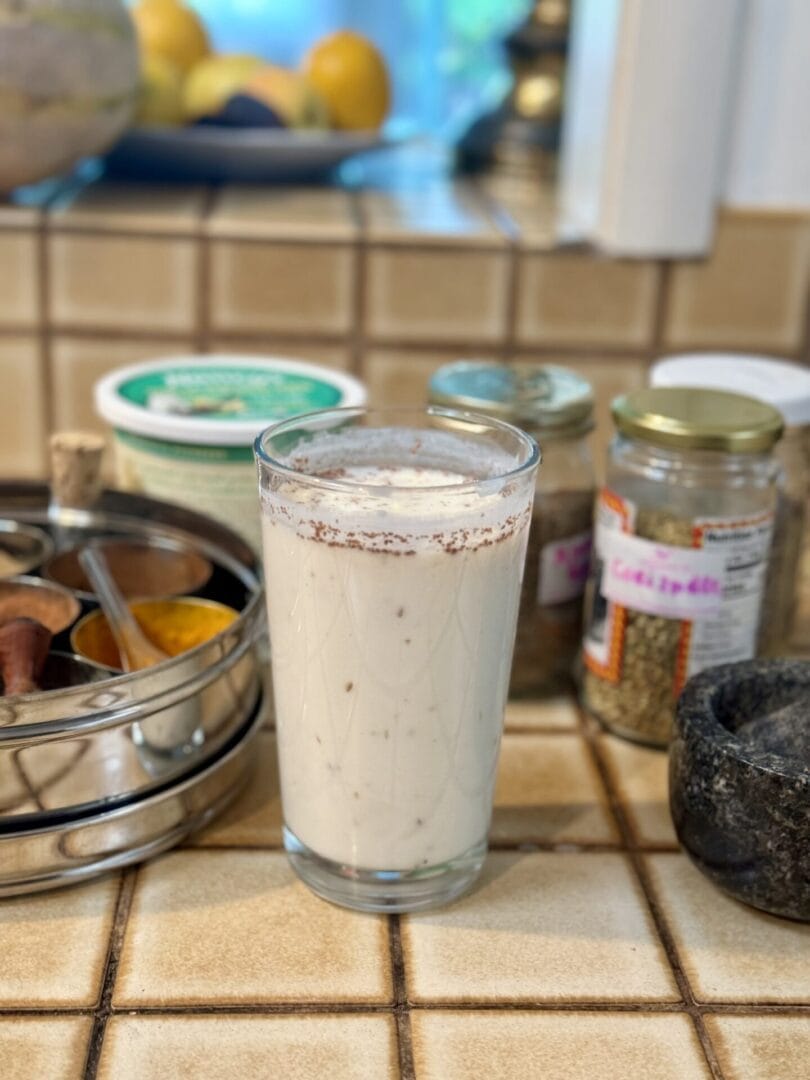We loosely use the word yoga in modern Western culture to mean yoga postures but it can include other parts such as meditation, mantra, pranayama, and Ayurveda. But, what have you been taught about yoga? How much clarity do you have about what a yoga practice is? And what are the parts that make a full practice for you?
It is normal to think that yoga mainly consists of warm rooms, loud music, sweaty bodies doing flowing movements, and not a lot of verbal instruction from the instructor. That is yoga. That type of practice can get you to feel good. You can become physically strong and flexible and with a quieter mind, too.
But what happens when you are tired? Sick? Injured? Bored? What happens when you keep going and it doesn’t feel the same or enough anymore? Do you stop doing yoga and try something else? Do you just keep going and wait for the feeling to change? Or have you thought that there might be more to this system?
I think there are 4 pieces to the practice we call Yoga. The pieces are yoga postures, meditation with mantra, pranayama, and Ayurveda. This is a system that goes together. You can practice just one, but if you really want to experience real change that is grounded in good intention and stability then doing more than one is the way to go for you.
The best classes of yoga for me have always been ones where I am completely educated every time I attend a class. Expansion of the mind, every time.
For this to happen a lot ends up depending on the teacher. He/She has to be internally elevated, humble, strong, commanding, empathetic, and a true conveyer of knowledge. In that environment, my entire being wakes up and stays awake. Then I really learn. And when I walk around in the world after that kind of consistent experience, nothing is the same.
But it is not only the teacher, the practices need to be done. And consistency is important. When you begin to practice, and you feel the impact on your life and you find yourself thinking about it more and more, the practice has ntegrated into your life. You will find yourself naturally living a yoga lifestyle. This happens automatically and even if you aren’t always consistent, the energy is there within you to pick up again and dive into more deeply at any time.
Here are the 4 parts of a yoga practice that work well together. This creates a systematic approach that will give you a clear and creative mind, and easier time with the problems that will arise in your life and confidence in all your innate abilities.
Yoga. This is referring to the Yoga poses. They allow you to utilize your muscles in an effective way that helps to release the strain that daily life brings to the body, to help you decompress. Many of the experiences in life cause us to contract, such as argumentative situations, heartbreak, and financial frailty.
This article from the New Yorker on yoga is worth a read. It will give you some insight into how yoga came to be part of our western modern culture.
Pranayama is the practice of consciously regulating and directing your breath to influence your mental state. Derived from Sanskrit, the word “Pranayama” combines “Prana,” which refers to the vital life force, and “Yama,” meaning to gain control or mastery.
Pranayama is considered to be a more advanced practice than yoga postures. Due to this, most yoga classes don’t teach pranayama as a stand alone practice but rather incorporate breathing methods alongside the postures. However, pranayama offers the most benefits when specific instructions are given, guiding you through a process that brings you into a deep state of awareness. To achieve this, a quiet space and clear instructions are necessary to help you become aware of the subtle body and pratyahara, which involves the withdrawal of the senses.
Here is more information and how to practice pranayama for beginners:
Meditation with Mantras are practices that involve training the mind through the repetition of sacred sounds or mantras. By internally reciting these sounds, the mind undergoes a swift shift in perspective, resulting in a profound sense of ease and relaxation. This focused approach serves as a means to cultivate concentration, enabling individuals to be grounded in their bodies and centered within themselves.
I like this book on meditation with mantra: Meditation and Mantras by Swami Vishnu-Devananda
Ayurveda is based on the idea that disease is due to an imbalance or stress in a person’s consciousness. Ayurveda encourages lifestyle interventions, such as diet, healthy eating habits, yoga, meditation, mantra, pranayama, aromatherapy, oil massage color therapy, and more to regain a balance between the body, mind, spirit, and the environment.
Check out this Forbes article on Ayurveda for a more in-depth understanding.
By embracing these practices the positive effects will surpass any other aspects of your life. The drive to continue will come from within. This inner drive is an integral part of the transformative journey we are all embarked upon. The tools of yoga serve as invaluable companions, guiding and supporting us along this path of self-discovery and personal growth.
For instruction on yoga postures, meditation with mantra, pranayama, and Ayurveda, check out any of my live yoga classes or recordings here.
If you like this content and want more get access to my weekly Blog drop here and get a copy of my Yoga Journal too. The Journal is designed to help you keep track of your healthy lifestyle practices.
Check out my yoga website to learn more about what I am teaching, my weekly live schedule and more here.







